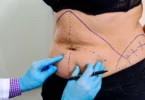Almost over 40 % of people suffering from dental issues avoid the dentist’s chair out of fear of having a bad dental experience. Sedation dentistry is a breakthrough that has helped patients relax during dental procedures.

What is Sedation Dentistry?
Sedation dentistry is fairly common with dental practices. It involves administering certain medications that help patients relax. So basically you are awake throughout the dental procedure unless you are on general anesthesia, which is uncommon for dentistry. Only a particular part of your body feels numb and you do not feel any sensation in there for a while. So while your dentist is operating, you don’t feel a thing.
Before getting into the details of sedation dentistry, lets first get out basics clear. How sedation helps or ‘What are the different levels of sedation?’
First, there’s minimal sedation where you feel relaxed while you are awake.
And then there’s moderate sedation that gives you a ‘high’ kind of a feeling. The slurring of words is a common side-effect of conscious sedation. Next comes deep sedation, where you hang on the edge of consciousness. You are not exactly asleep, neither awake. The last is a general anesthesia, which gets you completely unconscious. This is the most common form of sedation used by dentists during procedures.
Now coming back to the topic, here is how it helps patients to relax during dental treatments.
1. Inhaled minimal sedation

Nitrous oxide aka laughing gas combined with oxygen is given to the patient through a mask. The patient slowly inhales the gas via the mask placed over his nose. It might sound dangerous as you don’t know how much gas you should inhale, or have inhaled. Luckily, dentists can regulate the amount of gas that you inhale. The effect of this gas wears off fast and there is no danger involved when administered correctly.
This is not the kind of sedation that knocks you off immediately, unlike the movies. You can drive yourself back home after the procedure!
2. Oral sedation
Oral sedation can have a minimal to moderate effect on your consciousness, depending on the dosage.
If your dentist decides on minimal sedation, he hands you over a pill, Halcion for oral consumption, an hour before any procedure. This has the same composition as Valium and makes you feel a little drowsy. However, you are fully awake and in your senses all through the procedure.
And in case your dentist chooses moderate sedation, he will normally opt for a higher dose. This type of anesthesia is pretty common in dentistry. The effects may include feeling groggy to actually falling asleep during the treatment or surgery. However, it is not the kind of death-like sleep that you imagine. Patients normally wake up with a gentle shake.
3. IV moderate sedation
Often patients get anxious and nervous at the idea of sedation. In such cases, the surgeon will administer a sedative, in moderate amounts through a vein. So the patients slowly drift into a sedated state without even knowing. This is probably the fastest form of sedation. IV sedation dentistry allows your dentist to monitor the level of sedation your body is receiving continuously.

The most popular drugs used for IV sedation are benzodiazepines. Diazepam, lorazepam, and Midazolam are a few of the common drugs used for IV sedation in dentistry. If you are wondering whether IV sedation hurts or not, the answer is NO. A combination of sedation and anesthetic helps you relax during the procedure. Most of the patients don’t even remember the procedure clearly and walk out of the dentist’s office with a feel-good after effect.
4. Deep sedation and general anesthesia
Deep sedation is carefully administered and closely monitored. The primary aim of deep sedation or general anesthesia is to make the patient comfortable and get his cooperation throughout the procedure while ensuring a pain-free experience. Though patients slip into an unconscious sleep-like state, they can be easily woken up with repeated stimulation.
Deep sedation and general anesthesia may sound similar but are different in subtle ways. Sedation essentially is a component of general anesthesia and doesn’t always result in unconsciousness, unlike general anesthesia. Patients do not feel or hear anything after sedatives from general anesthesia enter into their bloodstream. You have to wait till the effects either wear off or certain reverse medications nullify the effect of general anesthesia on your body.
What are the benefits of sedation dentistry for patients?
Many people will prefer a ride to hell and back over a single visit to the dentist’s office. The thought of staying awake while your doctor pulls out your tooth or probes your gums is foreboding. Thankfully it is not like we usually imagine. Sedation dentistry has put an end to these horrors. Here are 4 of the many benefits sedation dentistry has to offer :
- It helps patients relax throughout the entire procedure and relives presurgical anxiety. Anxiety and nervousness are some of the main reasons why people tend to avoid dentistry like the plague.
- Amnesia is not a desirable side effect in most of the situations. However, in dentistry, it is quite the opposite. Patients usually don’t remember most of the procedure, which is a good thing! The temporary inability to create and retain fresh memories ( of the procedure ) is a boon for many scared patients.
- Gag reflex, in reality, is a beautiful defense mechanism to expel any undesirable foreign element from our respiratory tract. However, it can be a hindrance while the dentist is operating on you. Sedation reduces gag reflex and makes the procedure smoother.
- The thought of pain is more painful than the pain itself. With advancements in IV sedation dentistry, pain during dental procedures is completely out of the picture. The brain, under sedation, is unable to detect any pain. Thanks to sedation dentistry you come out of the dentist’s office with a big smile.
So feeling brave yet? Ready to schedule your first appointment with the dentist? Go ahead and show your gums a little love.
ALSO READ:
- How to Overcome Dental Anxiety: 5 Effective Steps That Work
- 6 Best Home Remedies to Treat Wisdom Tooth Pain
- 7 Home Remedies For Toothache
- 5 Natural Remedies For Gum Disease
- Top 5 Benefits of Having Wisdom Teeth Removed
- 7 Options To Consider When You Have A Missing Tooth








